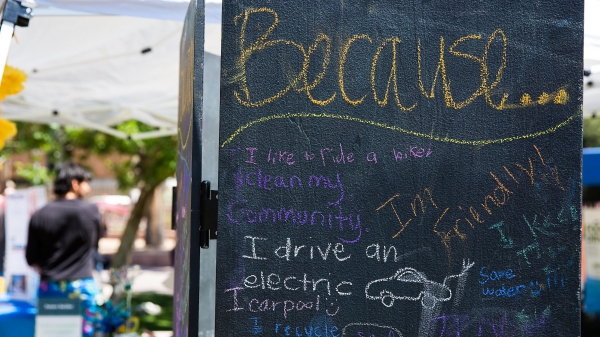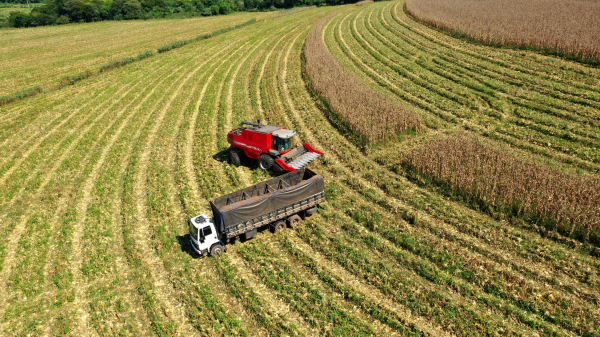Breaking down research barriers in data-driven decision-making
ASU to play key role in $5M NSF multi-institutional research grant to create ‘knowledge graph’

Wenwen Li
Around the world, we face unprecedented challenges, from a constantly evolving COVID-19 pandemic to increasingly violent natural disasters to a warming climate.
The problems our society faces today cannot be tackled by scientists within one discipline alone, and a clear need exists for an open knowledge network that analyzes critical data and fosters cross-disciplinary scientific collaboration.
Wenwen Li, associate professor in Arizona State University's School of Geographical Sciences and Urban Planning, is part of a multidisciplinary team of researchers that received a $5 million grant from the National Science Foundation's Convergence Accelerator to create an open, cross-domain "knowledge graph" that will connect and link facts and knowledge in new ways that haven’t been accessible or usable before.
The knowledge graph will be able to incorporate and interpret multiple dimensions of data across disciplines and produce relevant, actionable insights necessary to inform important data-driven decisions.
“Building a domain knowledge graph is a critical step towards developing artificial general intelligence for future machines to reason like human beings,” said Li, co-principal investigator of the project, who specializes in smart cyberinfrastructure and geospatial big data analytics. “The IT giants, such as Google and Facebook, have developed enterprise-level knowledge graphs to better understand the world’s information to improve web search and product recommendation.”
Building a scientific knowledge graph that models research data is very challenging — data comes from different sources, are encoded in different formats, are large in size, and are often short of metadata. Additionally, much of the existing data are hidden in the deep web, making their discovery and reuse even more difficult.
In the development of their knowledge graph, Li and her team, which is led by Krzysztof Janowicz of the University of California, Santa Barbara, aim to tackle these issues by developing novel AI and machine-learning techniques to discover, link, integrate, visualize and share the cross-domain data.
Tackling the ‘where’ problem
Critical to the research, the team will use "space" and "time" as the central themes to index and enrich scientific data, enabling the knowledge graph to incorporate geospatial analysis and better tackle the "where" problem often asked in environmental and social science research.
They’ve named their resultant knowledge graph, "KnowWhereGraph."
“By building the KnowWhereGraph, our research will connect and link the data and knowledge dots across disciplines, making them easily discoverable, understandable, usable, replicable and highly interconnected,” Li said. “This work will break the communication and research barriers across traditional science boundaries and accelerate the scientific discovery process in a novel way.”
Besides creating novel research, the team’s goal is also to develop a set of open source products, including the graph query and visualization tools and geoenrichment services to foster their widespread usage and commercialization.
Collaborative geospatial research
The KnowWhereGraph project is one of nine projects that were selected by the NSF Convergence Accelerator out of a Phase I cohort of more than 40 highly competitive teams that were all focused on high-impact societal solutions.
The project represents a cross-sector collaboration consisting of several universities: University of California, Santa Barbara; Arizona State University; Kansas State University; Michigan State University; and the University of Southern California; industry partners Esri, Oliver Wyman, Hydronos Labs, LLC, IN1OT; Direct Relief as an NGO; and the U.S Geological Survey and the U.S. Department of Agriculture representing the government.
“I am very excited about this project, not only because the important research that we are conducting will bring potentially significant societal benefits and changes, but also because of the opportunity to work in such an amazing team,” Li said. “I have known these superb scholars for years for their outstanding work, and I am so glad that we now have the opportunity to build a strong collaborative research network to conduct convergence research and promote data science together.”
More Environment and sustainability

Earth Day celebrations focus on making our planet a priority
On April 22, Earth Day is celebrated across the country and in nearly 193 countries around the world. Arizona State University…

ASU scientist studies how bans, regulations on food technology affect consumer acceptance, perceptions
How do people process scientific developments with outside influences, warnings, biases and others’ opinions filtering in? That…

ASU team's research leads to new law protecting mobile-home dwellers
Arizona Gov. Katie Hobbs signed a law earlier this month that guarantees mobile-home owners’ right to install cooling measures,…